U.S. Navy Fleet Supply Base
At the north end of the Bush Terminal, between 29th/31st Streets and west of 3rd Avenue is the location of the old U.S. Navy Fleet Supply Base.
In 1916, the US Congress passed the Naval Act of 1916, which authorized $500 million dollars for a three-year program to expand the navy and its facilities. Lacking additional necessary space at the Brooklyn Naval Yard for a supply depot, the Navy looked south to the Bush Terminal, which had the advantage of existing rail and water shipping infrastructure.
In 1918, work began on the Fleet Supply Base. The Navy leased three new piers from the City next to two existing Navy storehouses and a Navy airplane storage building. The Navy then purchased the lot between 2nd and 3rd Avenues from the Bush Terminal and built two large eight-story storehouse buildings (aka Federal Buildings #1 and #2), a power house, seven miles of rail lines between the buildings and piers (and connecting to the Bush Terminal Railroad), two float bridges and a parking lot. The complex was was designed by the Bureau of Yards and Docks of the Navy Department with Howard Chapman serving as chief architect, Captain R. C. Hollyday overseeing construction and Henry C. Meyer, Jr. serving as consulting mechanical engineer. The buildings were hastily completed in seven and a half months and this haste, in addition to scarcity of materials in wartime, lead to buildings that were structurally sound but largely devoid of architectural distinctiveness. The buildings were used for the receipt, storage and disburasl of a wide variety of materials and equipment on a large scale
In the demobilization following WW I, the Navy had limited use for the base and gradually divested itself of the facility. In the early 1930s, the two large warehouses were used by the Naval Clothing Depot for the manufacture and distribution of uniforms, notably reaching their peak output during WW II. As the Navy shifted focus to nuclear submarines following WW II, the Fleet Supply Base (along with the Navy Yard further north) lost much of its remaining importance. During the Korean War it became a supply depot for the Coast Guard. In 1960, the property was taken over by the GSA for variety of government offices and facilities. Two-thirds building #1 was eventually demolished with the remainder being converted to a Federal Detention Center in 1991. As of this writing, plans seem to be stalled on the conversion of Storehouse #2 into a mixed-use retail and office space as Sunset Marketplace (reference)
Historic photos of the US Navy Supply Base buildings along with detailed historic info can be viewed online in the Library of Congress' Historic American Buildings Survey
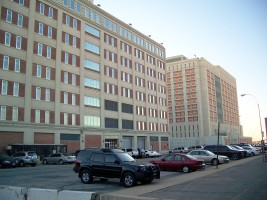
Federal Detention Center (Former Storehouse #1 - north side on 29th St)
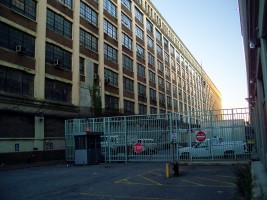
30th St. between Storehouses #1 and #2
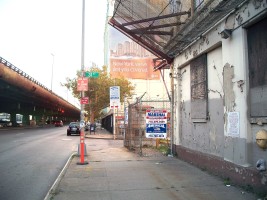
Sidewalk on 3rd Ave east of Storehouse #2
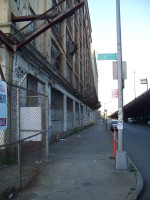
Sidewalk on 3rd Ave east of Storehouse #2 looking north
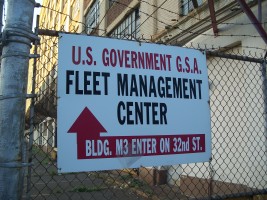
GSA Fleet Mgmt. Center Sign
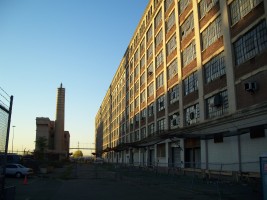
South side of Storehouse #2
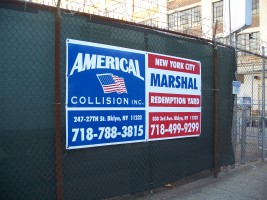
Marshal Redemption Yard - south of Storehouse #2
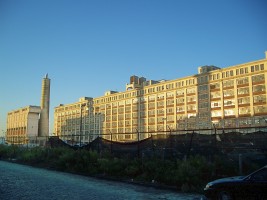
South side of Storehouse #2
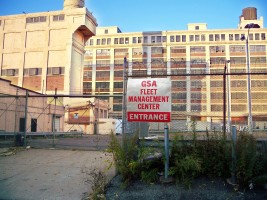
GSA Fleet Mgmt Center sign off 32nd St
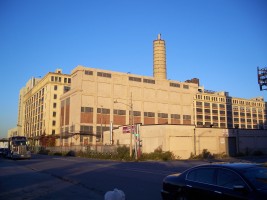
Supply base Powder House

Federal Detention Center (left - old Storehouse #2), Storehouse #2 (right) off 2nd Ave
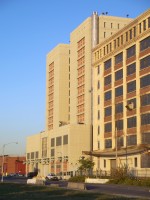
Federal Detention Center
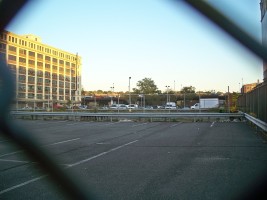
GSA / Marshal Redemption Yard south of Storehouse #2